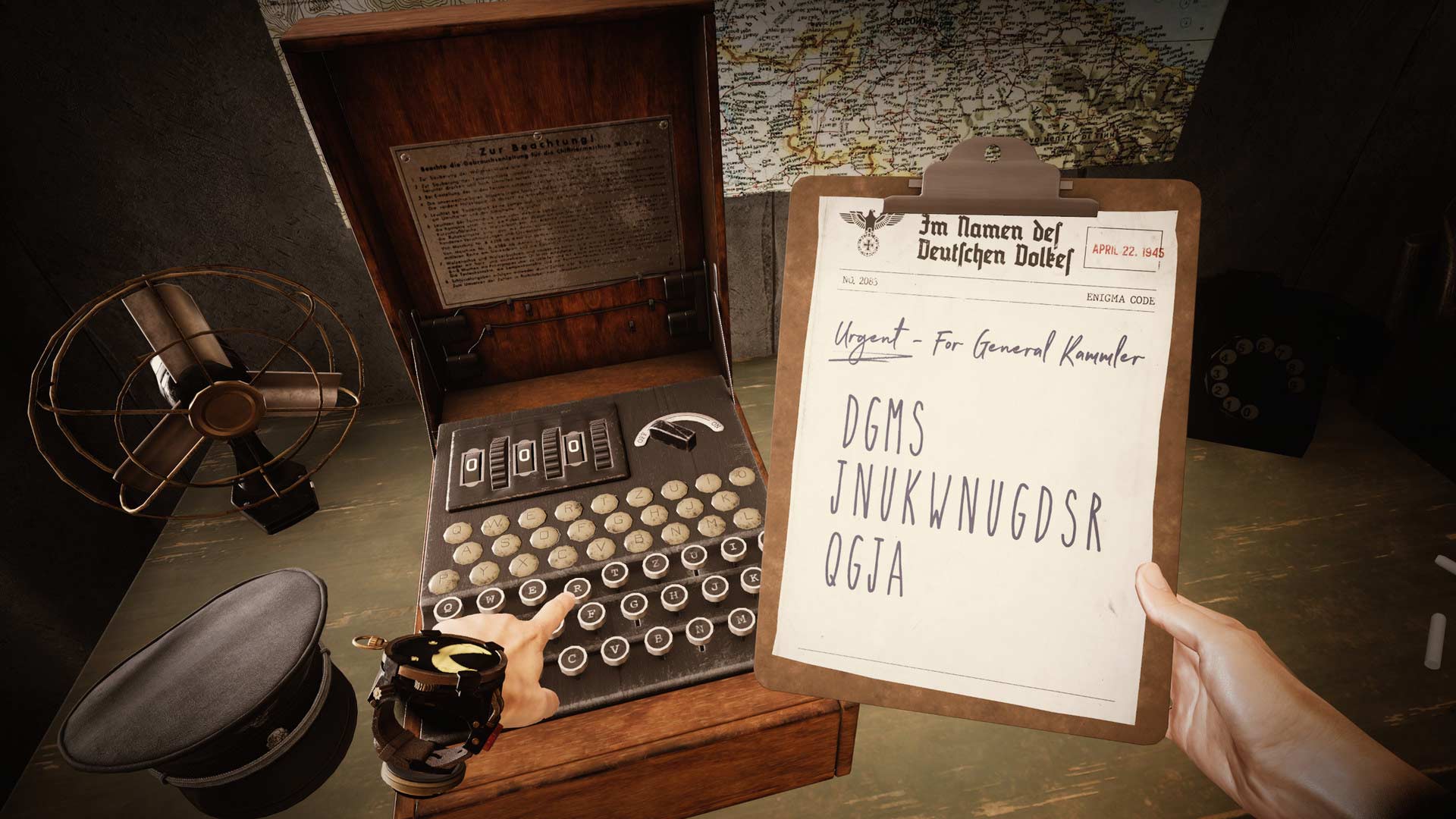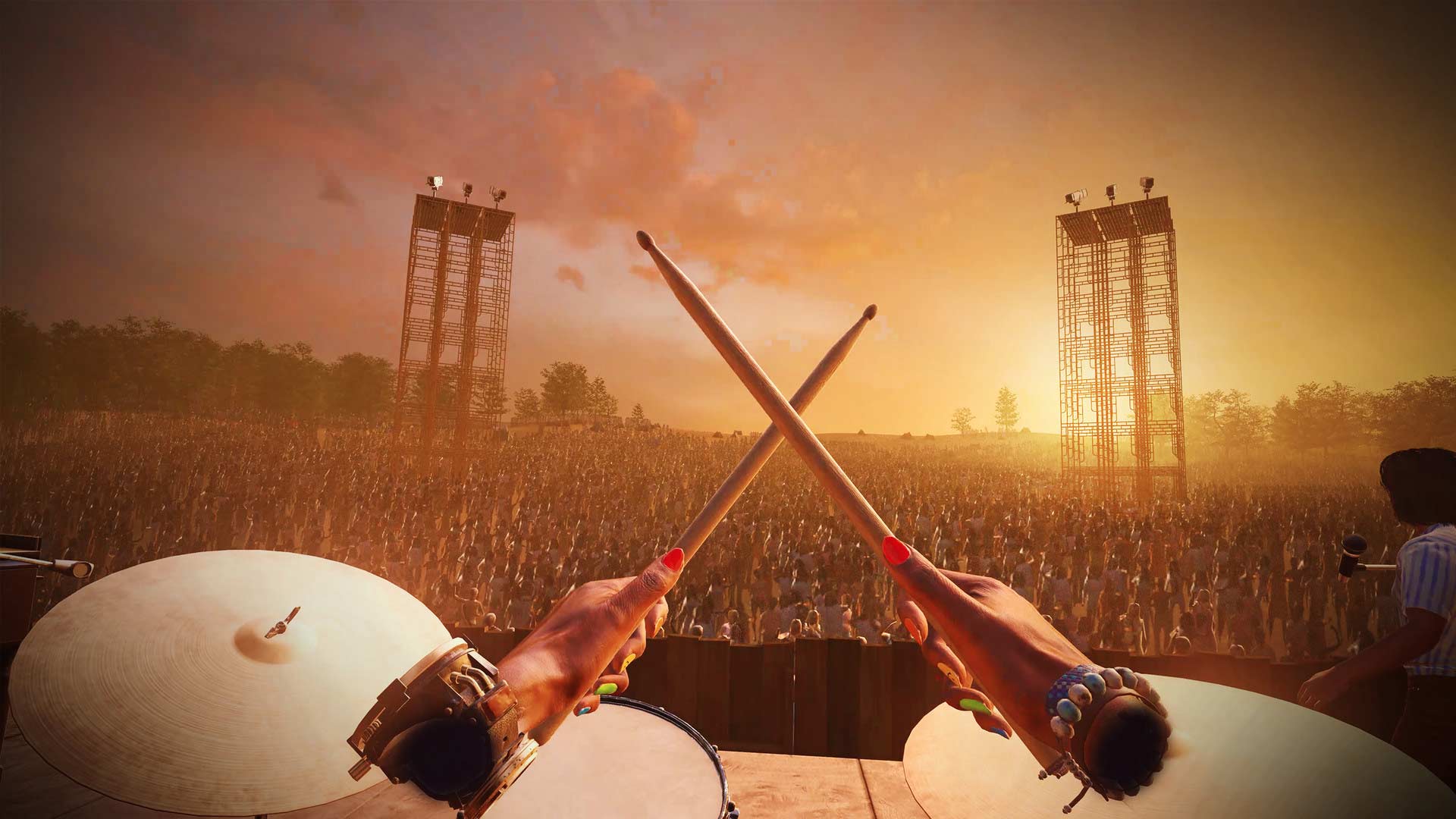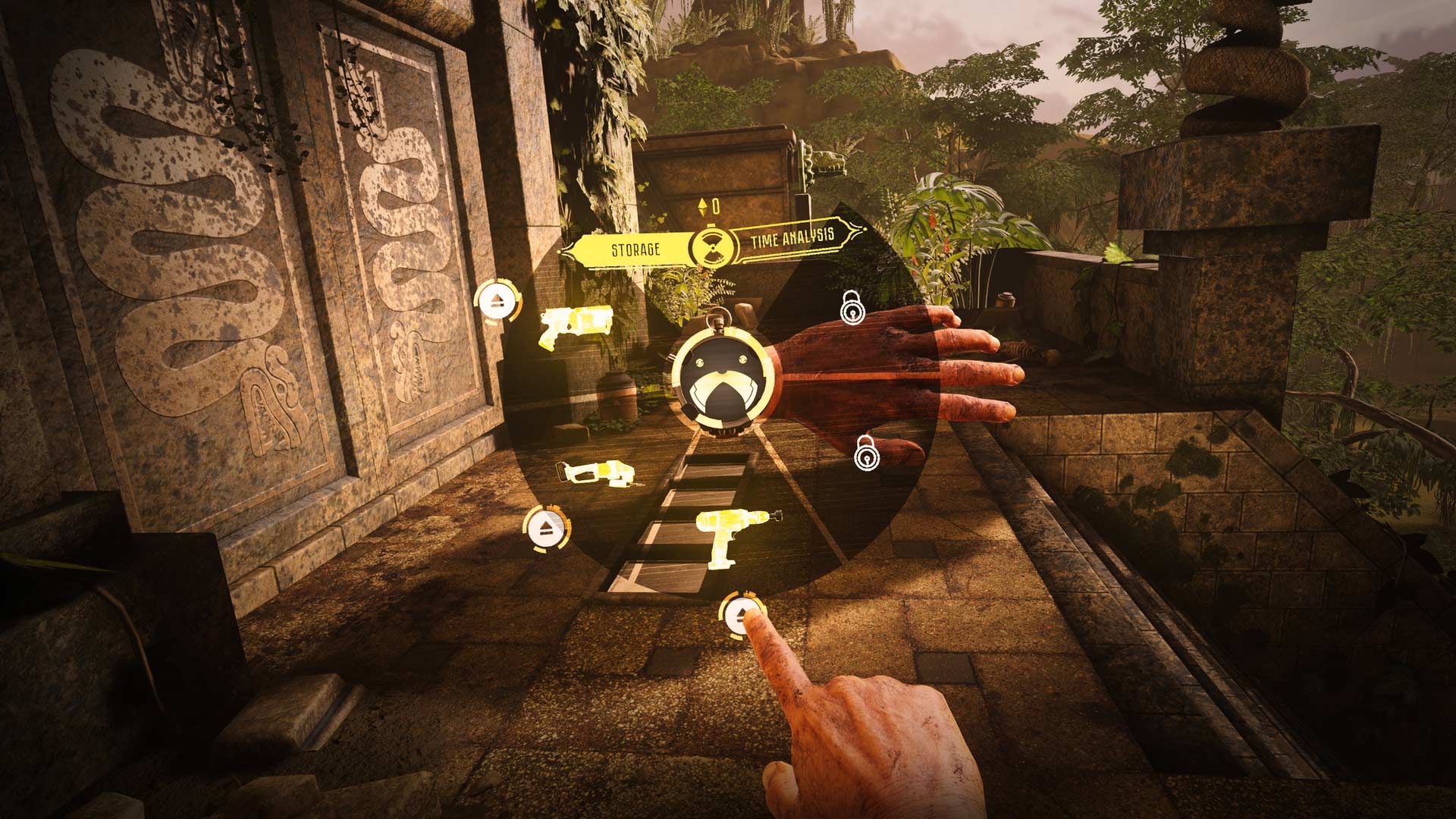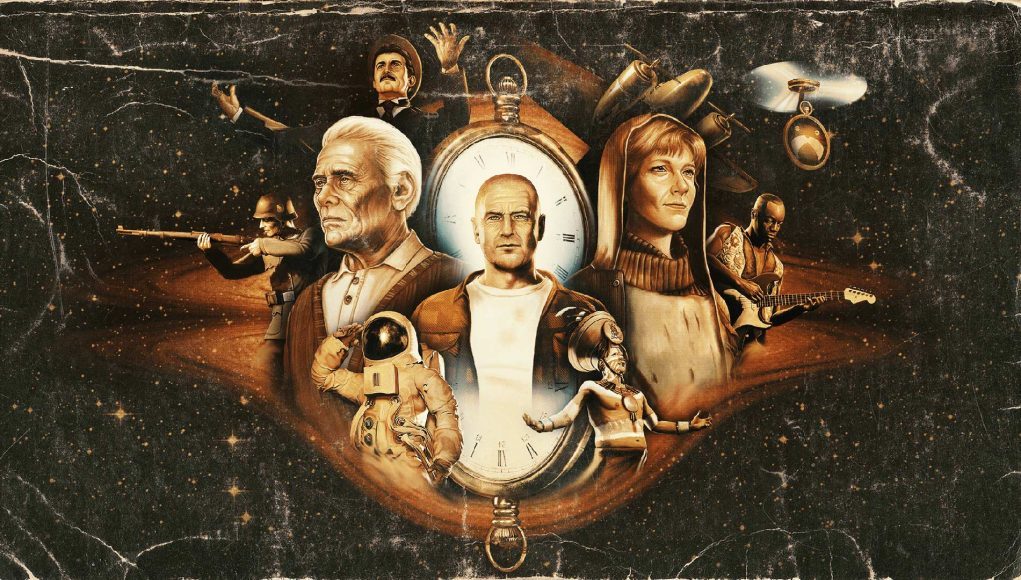Wanderer is a VR adventure game that puts you in the shoes of a hapless time traveler who finds himself trapped in an alternate history—one that starts (and possibly ends) in worldwide disaster. Wanderer excels with its smorgasbord of interesting puzzles that do very little hand-holding. Its fun and well-designed set pieces play as an immersive backdrop to an engrossing story, all of which hopefully distract you from its particularly clunky level of object interaction.
Wanderer Details:
Available On: Steam, Rift, PSVR
Release Date: January 27th, 2022
Price: $40
Developer: M-Theory, Oddboy
Reviewed On: Quest 2 (Link via Steam)
Gameplay
Theorizing that one could time travel in his own lifetime, Asher Neumann stepped into the Phoenix Project accelerator and vanished. He awoke to find himself trapped in time, facing mirror images that were not his own, and driven by an unknown force to change history for the better.
That’s the setup anyway, most of which I lifted from the intro sequence to cult ’90s TV show Quantum Leap, a big inspiration for Wanderer. Another obvious comparison here is Netflix’s hit German sci-fi show Dark (2021), although Wanderer’s story isn’t nearly as convoluted.
On the contrary, Wanderer’s narrative beats are actually pretty low density despite the wide variety of places you can visit. The story is primarily doled out in found items like videos, books, and posters, which give you a wider understanding of what’s going on and give valuable clues on how to solve puzzles. That said, they very rarely smack you over the head with their meaning, and can be easily mistaken as simple bits of decoration. That means you have to look around and invest more meaning in less objects, i.e. you won’t find a diary indicating all of the thoughts and feelings of a character, just a photo with a cryptic one-liner.

Wanderer’s story only really picks up in intensity in the last quarter of the game. Instead, it puts a much heavier focus on serving up a smorgasbord of escape room-style puzzles, many of which have no instruction on how to solve. These range in difficulty level, with the most challenging typically calling on the player’s ability to travel back and forth through the game’s discrete temporal set pieces to gather the right object(s). More on that below.
For example, you may need to grab a sponge and a bottle of spray cleaner from your home base and travel to the pre-Columbian Mayan civilization to wipe off a dusty plaque to see a code. Or you may need to assemble pieces for the Enigma machine, use Morse Code to set off an alarm, and jump through multiple such hoops to get to Woodstock in the ’60s. In short: it’s difficult, and has a ton of moving parts that may tax critical thinking skills.

While some of these left me wishing for an easy win, personally I’d much rather have to waste time retracing steps, turning the game upside down, and coming up with an organizational method for a literal mountain of stuff. It feels more authentic and rewarding, playing stark contrast to games in the genre that lean on tropes like overly helpful robot buddies that essentially tug you by the ear from point A to point B.
Ok, there is a robot buddy. But thankfully your ever-present wristwatch companion Sam is there to help by not only being a clue dispenser when actually needed on demand, but also a useful tool that acts as the game’s inventory. On top of that, his voice is a dead ringer for Matthew McConaughey. (Murph!)
Sam also is the basis for the game’s teleport mechanic, which makes for a novel and fun way of using key items you find throughout the game and using them to travel to new and interesting locales which are always brimming with new items that you might just find a use for in other worlds.
Traveling to other time periods is accomplished by grabbing key items and inserting them into a disk where the clasp of the watch would usually be. Those piece rumble in your hand, so the whole process has a tactile feel that I really appreciate.
In the end, Wanderer basically delivers despite some built-in clunk endemic of this sort of step-by-step gameplay that relies on a large set of interchangeable objects.
You have to not only think practically about every item you’ve encountered and remember where it is in time, but hope it’s the right item that the game intended you to use. Blowing up a bomb where you shouldn’t, or shooting an arrow into the head of Nikola Tesla will result in you being kicked from the timeline to try again. That’s a bit of a downer if you have an obvious alterative solution (ok, not shooting Tesla) and you’re punished for using it.
All of this is punctuated with arcade-style interludes, like a Guitar Band-style rock sequence where you play the drums to the beat. I was left wishing for more of these because they made for a welcome break from doing things like literally fixing and restarting an entire hydro-electric power plant, which includes plenty of grunt work of finding parts, replacing them, and hoping the game doesn’t throw a curve ball your way by, say, leaving a control panel back with a bunch of literal Nazis in another time period.

In the end, it took me around ten hours to complete. I should note that I experienced several bugs which required me to restart to the latest chapter because of how much they broke forward progress. These are functionally small things that will probably be addressed in future updates, however day-one players may experience things like puzzles not activating when they should, which can add to the frustration of retracing your steps in vein before deciding its the game’s fault and not your own.
Immersion
Immersion is a bit of a mixed bag with Wanderer. On one hand, you’re served up some truly gorgeous, well put-together set pieces. It’s the level of care and visual finesse that, if you squint, you’ll swear you’re somewhere else. The team’s ability to layer their world with a vast array of textures and objects that feel real simply can’t be understated.
Both the game’s script and voice acting are giant highlights too. There’s nothing worse than a character with an obviously fake accent delivering a cheesy line when it comes to maintaining immersion, but the level of voice talent and writing expertise in Wanderer is top-notch. Case in point: you interact with Sam for literal hours, and he over that time he starts to feel more like a buddy than a timepiece only capable of delivering quips and puzzle hints.

And then you have an invisible walls that stop you from walking too far for no apparent reason. Or a host of objects on a table, half of which can actually be picked up.
That would be less of an issue if the game’s level of object interaction felt like it belonged in 2022 instead of ostensibly time-traveling from 2016, a time when all games basically forced objects to automatically snap to your hand in one relative position. Another issue is that force grab makes manipulating things less simple by stopping you most of the time from physically grabbing something that’s right in front of you.
Needless to say, the game’s not-awesome object interaction makes for a constantly frustrating experience when it comes to manipulating Sam. I found myself selecting an item with my outstretched finger, and then with that same finger trying to eject it from Sam’s menu, only to close the menu because the game counterintuitively wants you to palm the tiny one-inch icon.
If Wanderer had the same finesse with object interaction as it does much of the rest of the game, you might even make some comparisons to Half-Life: Alyx in its level of polish and immersion, although it’s most important mechanical feature somehow falls short.
Comfort
Wanderer has the full range of standard comfort options, including variable walking speeds and snap-turning angles to go along with smooth turning locomotion and teleportation.
There are very few moments when you’re not on level ground, so moving around the world is almost always a comfortable experience. The only issue I had was the game’s seated mode, which didn’t seem to work at time of review.
‘Wanderer’ Comfort Settings – January 27th, 2022 |
|
Turning |
|
| Artificial turning | ✔ |
| Smooth-turn | ✔ |
| Adjustable speed | ✔ |
| Snap-turn | ✔ |
| Adjustable increments | ✔ |
Movement |
|
| Artificial movement | ✔ |
| Smooth-move | ✔ |
| Adjustable speed | ✔ |
| Teleport-move | ✔ |
| Blinders | ✔ |
| Adjustable strength | ✔ |
| Head-based | ✔ |
| Controller-based | ✖ |
| Swappable movement hand | ✔ |
Posture |
|
| Standing mode | ✔ |
| Seated mode | ✖ |
| Artificial crouch | ✖ |
| Real crouch | ✔ |
Accessibility |
|
| Subtitles | ✔ |
| Languages |
English
|
| Alternate audio | ✖ |
| Languages | English |
| Adjustable difficulty | ✖ |
| Two hands required | ✔ |
| Real crouch required | ✖ |
| Hearing required | ✖ |
| Adjustable player height | ✔ |







